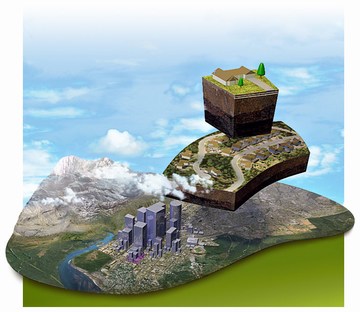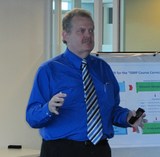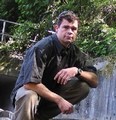Partnership announces that Water Balance Model “Version 2.1” will go live in Fall 2011
Note to Reader:
In February 2011, the Water Balance Model Partnership decided to convert the user interface from a Flex-PHP platform to one that has a PHP-AJAX-HTML basis. Then, in April 2011, the Partnership leadership had an epiphany which led to the decision to also rebuild the website front-end in conjunction with the platform conversion. Implementation is proceeding to meet this timeline:
- By June: Go live with “Version 2.0” which comprises the new platform and the Stream Erosion and Water Re-Use Modules.
- Commencing in June: Re-build the website front-end.
- By October: Go live with “Version 2.1” which includes the Climate Change and Tree Canopy Modules.
The epiphany was an outcome of insights flowing from the 2011 Water Balance Model Partners Forum, hosted by Metro Vancouver, and two training sessions hosted by the City of Surrey for WBM Paying Subscribers.
The article below describes how re-building of the website front-end will allow Water Balance Model users to select an environment that fits their knowledge and needs; and it explains how having three launch points will facilitate establishing and integrating performance targets at three scales, namely: watershed, neighbourhood and site.
To download a PDF version, click on Partnership announces that Water Balance Model “Version 2.1” will go live in Fall 2011
Implementation Plan
In November 2009, British Columbia’s Water Balance Model Inter-Governmental Partnership (IGP) and the Alberta Low Impact Development Partnership (ALIDP) released Water Balance Model for Canada – The Plan for the Future. This comprehensive document will guide tool enhancement over the next three years. To download a copy, click here.
 “The Plan for the Future provides a concise synopsis of ‘need to know’ information about the Water Balance Model,” explains Ted van der Gulik, IGP Chair. “It also presents a road map for greatly increasing both the computational capabilities of the Water Balance Model and its usability in visioning future alternatives for use of water and land.”
“The Plan for the Future provides a concise synopsis of ‘need to know’ information about the Water Balance Model,” explains Ted van der Gulik, IGP Chair. “It also presents a road map for greatly increasing both the computational capabilities of the Water Balance Model and its usability in visioning future alternatives for use of water and land.”
“The Water Balance Model is moving toward an expert system with broad capabilities that can quickly provide answers to questions, and compare a number of site / watershed conditions, while giving consideration to the effects of climate change. The identified next steps in the development process will target specific technical matters; and will produce a system that can be a coach, providing guidance to all levels of users.”
Three Points of Entry
“As the community has grown and user preferences have evolved, we’ve reached a point where one WBM interface no longer works for everyone. We now need to provide an environment that supports communities that range from highly experienced experts to enthusiastic newcomers,” reports Dr. Charles Rowney, Scientific Authority for the Water  Balance Model Partnership.
Balance Model Partnership.
“To do that, we have decided to re-build the WBM website front end with three points of entry; these three options will allow people to select an environment that fits their knowledge and needs. What is important in the way we’re making this shift is that it facilitates communication without sacrificing rigor or consistency, because in all cases the answers will be founded on the same calculation engine.”
Three Scales of Integration
According to Dr. Rowney, three launch points correspond to three common investigation scenarios:
- WBM for the Watershed– “This is the scale where the big environmental questions are answered; it is about what happens to the creek as a result of the way the whole system is managed. It is where the environmental science makes itself felt and where features like the Erosion Module provide answers that make stream health real to planners and engineers, or where the long term impact of build-out can be explored.”
- WBM for the Neighbourhood– “This is the scale of interest to the developer who, consistent with the plan for the watershed and with best practices in local development, wants to lay out a development that includes integrated local solutions. This is where things like regional or multi-dwelling detention facilities can be evaluated, or where Green Infrastructure plans can be looked at in detail.”
- WBM Express for Homeowners – “This is the lot or site scale, and is especially relevant to redevelopment scenarios where infilling is of interest, or to homeowners interested in exploring the kinds of conservation and environmentally appropriate solutions they can apply on their own lot. Included in this are things like re-use options or cisterns that conserve water for gardening or other uses at home, or where porous paving or other green infrastructure drainage techniques are brought to bear.”
 “The Hastings Creek Watershed Planning Project in the District of North Vancouver is providing the opportunity to demonstrate how we can apply the Water Balance Model to achieve integration of performance targets at the three scales. This integration is essential if we are to prevent land redevelopment and densification from adversely impacting on stream health ,” reports Richard Boase, IGP Co-Chair and the District’s project manager for the Hastings Creek plan.
“The Hastings Creek Watershed Planning Project in the District of North Vancouver is providing the opportunity to demonstrate how we can apply the Water Balance Model to achieve integration of performance targets at the three scales. This integration is essential if we are to prevent land redevelopment and densification from adversely impacting on stream health ,” reports Richard Boase, IGP Co-Chair and the District’s project manager for the Hastings Creek plan.
QUALHYMO Calculation Engine
The Water Balance Model is powered by the QUALHYMO calculation engine, developed by Dr. Charles Rowney in the 1980s with funding provided by the Ontario Ministry of Environment.
When it appointed Dr. Rowney as its Scientific Authority, the Water Balance Model Partnership vested him with the authority to define, oversee and manage the technical competencies that are embedded in the Water Balance Model. This authority encompasses the computational and scientific/engineering functions.
Dr. Rowney is a recognized global authority in his fields of expertise. He brings a wealth of North American and international experience to his responsibilities as WBM Scientific Authority.
To learn more about the calculation engine, click on Water Balance Model website also hosts the “official” QUALHYMO hydrologic simulation model — Having both tools accessible from the same website provides drainage modellers with a choice, depending on the modelling objectives and the capabilities of the user. This will also preserve the legacy of the tool developed by Dr. Rowney.

Performance Targets at Three Scales
“Recognizing that we are expecting different things from the continuum of users, our epiphany was about how we provide a navigation aid. We listened. We observed. We  wondered. And then the idea of the three launch buttons clicked,” recalls Kim Stephens, Executive Director for the Partnership for Water Sustainability in British Columbia.
wondered. And then the idea of the three launch buttons clicked,” recalls Kim Stephens, Executive Director for the Partnership for Water Sustainability in British Columbia.
“Once the power of the idea took hold, this triggered the next Ah-Ha moment. When the Partnership released Beyond the Guide 2010 last year, we highlighted that Table 2 (see below) is pivotal in setting watershed targets. Table 2 is the one-page synthesis of a framework for moving from planning to action. But we needed something more to make Table 2 real to those who work in the local government setting.”
“Rebuilding the Water Balance Model website front-end with three points of entry will enable us to connect the dots to Table 2. Looking ahead, release of Version 2.1 later this year will provide local governments with the capability to make real the framework for setting watershed-specific performance targets and then implementing them at the development scale.”
“As emphasized in Beyond the Guidebook 2010, however, there must also be clear linkages between the targets and development approval processes to ensure action on the ground. Financial and legal tools must also be in place to ensure implementation of outcome-oriented strategies,” concludes Kim Stephens.
To Learn More:
To download a PDF copy of Table 2 as published in Beyond the Guidebook 2010 , click on either Developing Outcome-Oriented Watershed Plans: Framework for Moving from Planning to Action or on the image below.
 To gain an understanding of the context for Table 2, click on Beyond the Guidebook 2010: Implementing a New Culture for Urban Watershed Protection and Restoration in British Columbia to download the complete document. Refer to the Executive Summary for a synopsis and to Chapter 7 for the supporting details.
To gain an understanding of the context for Table 2, click on Beyond the Guidebook 2010: Implementing a New Culture for Urban Watershed Protection and Restoration in British Columbia to download the complete document. Refer to the Executive Summary for a synopsis and to Chapter 7 for the supporting details.
Click on Beyond the Guidebook: Establish Watershed-Specific Runoff Capture Performance Targets, released in February 2008, to gain an appreciation for the water balance methodology that is used to define a target condition.
Posted April 2011


